#19th Century History
Text
Tuberculosis and the Wild West
Spoilers for RDR2 , but it’s been since 2018, y’all. Trigger warnings for serious talk of severe terminal illness and severe stigma. As of 12/20 or 20/12, I have fixed some of the wording and added a few new things so please seriously head the warnings.
Ok, first, some background:
I've been studying TB since 2018; my father had a form of TB twice. I'm a historian, and one of my specialties is the history of medicine. Of course, you don't need to be a historian to write something like this. Also, please "like" and reblog, this sort of content takes time. Tons of pics of buildings, and info below of the “lore” and IRL people.
Background info about TB that y’all need to know: TB is still horrifically deadly and still a leading cause of death. To give you all an idea about how recent genuine scientifically proven treatments were- antibiotics targeting TB were not discovered until the late 40s. However, sanatoriums (TB hospitals) and similar TB-related places didn't all close until 1970. My sister was born in 1977.
To give you all an idea of how treeified people were of this disease, think of the stigma with the AIDS/HIV crisis in the 1980s or the early fears surrounding Covid.
TB is one of the three oldest diseases dating back to Ancient Egypt with early evidence appearing through ancient mummies. Starting around the 18th century, western people believed TB was a disease of the elite granting someone ethereal beauty, writing prowess, and artistic talents. It was known as a "romantic disease" and a "beautiful death" - both of which we know aren’t true.
Some western beauty standards are influenced by TB including rouged lips, blush, pale skin and a thin figure accentuated with corsets. However, the appearance was due to the patient wasting away. Patients actually had bloodied lips, feverish cheeks, a pale complexion from the illness and losing a large amount of body weight. That's why TB was initially called consumption.(There have been many other names for TB including the White Plague and Captain of All These Men of Death and phthisis which is Greek in origin.)
However, people eventually woke up and realized, "Oh wait, this isn't so sexy”
The disease spread like wildfire, especially in the cities affecting whole families as was seen with Doc Holliday. Soon, society blamed anyone who wasn’t a white upperclass person AND those who were "immoral . They believed it was someone’s own fault if they had the disease. People held a very e*gen*c view of the disease believing their activities or who their families were caused this.
Immoral in this instance includes thieves, sex workers, bar workers, drunkards, violent people, women who had children out of wedlock, said child born out of wedlock, and homeless people. Obviously, this isn't true. It was overcrowded spaces, poor hygienic practices, but also animals, especially cows and deer. Ironically, the deer/stag plays a huge role in RDR 2.
A few aspects from RDR 2 were inspired by Doc Holiday, one of the greatest gunslingers and outlaws in American history. His talents with the gun were considered by some as otherworldly. He and Wyatt Earp are most famous for the shoot-out at the OK Corral. Doc was dying of TB and headed west in order to potentially receive some medical attention, but found out that being an outlaw was great fun. Watch Tombstone for a fictionalized version of him. He had a very colorful life, but died of TB in Glenwood Springs, Colorado, at the age of 36. The same age as you know who.

This leads us to RDR 2 itself. The short answer about survival is potentially yes, but with some major stipulations. I have traveled across the country studying TB and visiting TB sites and have seen these locations firsthand. Read further to read how survival was possible and for pictures of key locations.
IF Arthur had rested, maintained a proper fat rich diet, rested in especially clean air and partook in light exercise, he MIGHT have had a chance. I would estimate a 60-70 percent chance based on my readings of TB survivors. The chance of survival could be more if he he headed West immediately after diagnosis.
The wealthy traveled to newly built luxury resorts, but most people lived in tent colonies, so Arthur would be very familiar with the site. Hell, if the gang moved West, and followed the conditions I mentioned above, he MIGHT have been able to recover without heading to a TB colony. The the gang wasn't stable, and they were being hunted down, etc.
However, people were pissed about the TB patients heading west to settle on "their land" (which is, of course, Native American land that was stolen). This pushed people to the outskirts of town and eventually, the establishment of sanatoriums which were tuberculosis treatment centers.
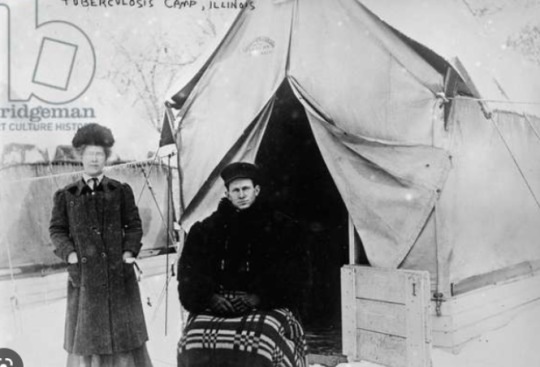
Both the picture above and below would be an example of the tents used by TB patients to camp out. The top picture was probably taken around the 1890s which is Arthur’s lifetime while the picture blow is probably from a later era like the 20′s based on the clothing. City people in big cities sometimes camped out on the roofs of their flats and apartments hence the setting of the second picture.

Due to the extreme fear, people were literally dropped off by families/friends or even government officials far outside of town. You did not want society to know that you had loved one with TB or else the stigma would affect you as well.
Later, TB patients were forcibly institutionalized. Many of these patients were ashamed of their affliction, but also felt further shame that their loved ones could be ostracized by society. I cannot stress enough how horrific this disease was and how tb psychologically affected the sufferer and its loved ones. Many tb sufferers never saw their loved ones again due to their families shunning them. I interviewed the elderly who remembered family members suffering from the disease and it still haunts their lives today. We see some of the shunning and stigma in the game, not just from the townspeople but from the gang. It's actually one of the reasons why I truly dislike a few unexpected gang members, for example.
At least Abigail, Charles, Tilly, John, and Sadie still treated him as a human. Hell, Even Molly was kinder to him and she was really suffering in chapter 6.
I will tell you right now, realistically speaking, in no way could Arthur have done anything at all in chapter six. I’m not only talking missions, but any sort of work. I won't go into graphic details, but one of the less graphic ones is that his hands would struggle to grasp objects, especially a gun. His joints would be too swollen. I know because I've seen it firsthand with my father and read plenty of accounts about it. Other than that, the game does a pretty great job of representing TB - however, Arthur could have been arrested or fined for spitting blood on the street which he did quite often in the game. Link goes to an academic article, but here is a more accessible link.
By 1899, people had been heading west for TB treatment for decades. People of all races headed west to Colorado, California, New Mexico, and Arizona being the prime locations. Dry air and or mountainous air were your best bets. Colorado was quite literally known as THE place for TB tourism as it was called. It was one of the first major waves of health tourism in the history of the USA.
Another famous person and case study is Dr. Edward Livingston Trudeau. He himself suffered from tuberculosis who sent up tuberculosis huts in Saranac Lake, NY. For further study, other key locations include Asheville, North Carolina and in the mountainous regions of Pennsylvania. They huts looked like this:
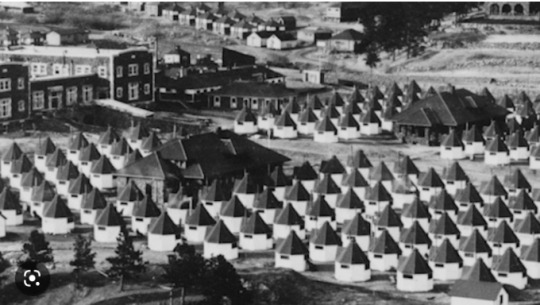
These were also in Colorado Springs, Colorado Springs was full of them and they are still occasionally found in people’s yards today.

I visited one in the Pioneer museum in Colorado Springs. I can post my pictures later, but this is one found in an outdoor museum.
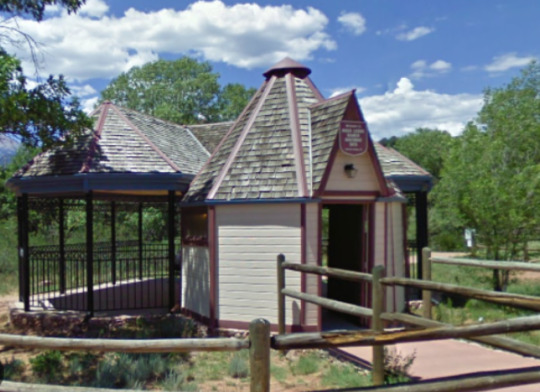
The TB patients had a very strict regimen of never leaving the bed and used bed pans. Healthier patients had access to their own private toilet. Stronger patients could work on doctor approved exercises, while even healthier TB patients who weren't ready to leave facilities yet could spend the rest of their time working around the camp or sanatorium.
Below is how Arthur would have looked getting treatment if he wasn’t in a hut or tent:
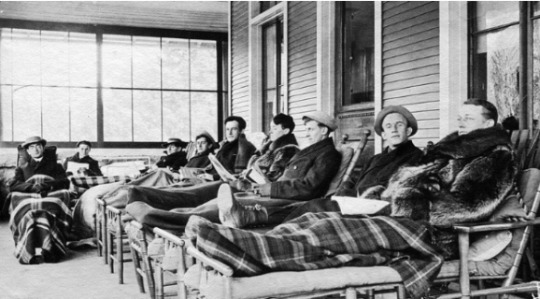

Above: Women receiving treatment. Below: An 1899 TB facility. Most tuberculosis sanitoriums were built from 1905 onwards so John’s era was FULL of them. The peak of the sanitarium era though was 1920-1940ish.
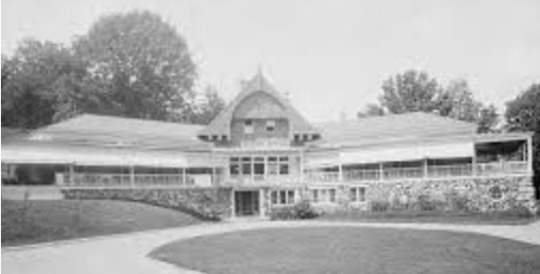
The problem is TB patients had a very chance of suffering from pneumonia once TB went into remission. It's happened in tons of my case studies. If Arthur could have survived both TB AND pneumonia, then he would have been considered "Ok". Not good, but “Ok”. However, I can't predict how long he would have lived afterwards. Some TB patients had tuberculosis come in a second wave. This is, unfortunately, very common. Some people lived a few months, a few years and some lived decades after surviving the second wave.
Fortunately, survival after two waves include people who lived hard, like Arthur. Trudeau lived till 68, and that is after 2 bouts of TB and pneumonia, with the third wave of TB being his cause of death.
This is very likely a reason why Arthur would have been in New Austin if they had kept him in the epilogue and continued the TB storyline. I personally do NOT think John was ever going to kill him.
MISC NOTES:
Related to RDR:
Important side note: Sex workers were especially blamed for spreading TB which makes sense because of the contact with multiple people, but it's not that different than someone who works at a factory every day, runs a shop or works at the docks, or in similar situations. Anyone could spread it. This is why it is actually technically very offensive to ask someone like Abigail if she had TB because it would be a way to imply she is unclean as a person. (Which people in the game already believe with some of the fandom similarly treating her poorly.) The history of sex work is my other specialty, so I am very familiar with their history. I will say, from what I gathered, sex workers did NOT seem to be that much more affected than others, but at the same time, we don't have a lot of records of people who weren't white upper-class Christian men. So we have these records if these people were arrested, but remember that all of the examples of people I mentioned were viewed as second-class citizens. Therefore, we have hardly any records of sex workers as actual people and historians have to be creative to find other ways to research them properly.
Modern day: TB is also becoming antibiotic-resistant at a frightening pace. This will become a massive problem. Treatment requires at least two antibiotics - streptomycin being the main choice for the primary antibiotic. This treatment lasts months, and these antibiotics are insanely strong. They can really mess with the body's system. I've seen it. My father was one of the lucky ones only having to take the pills for 8 months. Many others take it from a year to even 18 months. Other people take the pills and undergo radiation therapy to treat TB. Modern science can't produce enough new antibiotics to outpace it, but alternative treatments do appear to be promising.
If you want me to write more about TB or for any other history questions, feel free to send me an anon/message.
Additional pics:
Below: Sanitarium built around 1905.

Below: An example of a finished Sanatorium in 1911ish:

#rdr 2#arthur morgan#john marston#van der linde gang#red dead redemption 2#abigail marston#abigail roberts#charles smith#sadie adler#mary-beth gaskill#mary linton#wild west history#medical history#history of medicine#19th century history#tw terminal illness#meta#20th century history#tuberculosis#consumption#wild west#doc holliday#long post
786 notes
·
View notes
Text
Eu va dau frame urile voi le animati

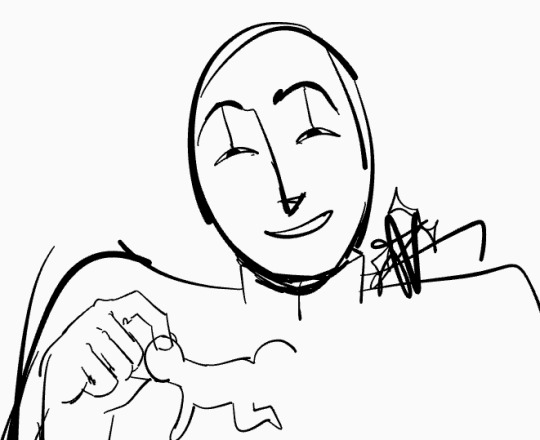


also yes it's related to the red flags animation and yes these guys are napoleon and alexander i again how smart am i frate deci jurati-va ca ati mai vazut asa cv
#napoleon#napoleon bonaparte#napoléon#tsar alexander i#alexander i of russia#alexander i#napoleonic wars#napoleonic era#napoleonic#history inspired#history#histoire#xix century#19th century#early 1800s#xix century history#19th century history#new art dropped#historical figures#1800s#xix#queer history#old man yaoi#sketches#small artist#unfinished art#wip art
60 notes
·
View notes
Text
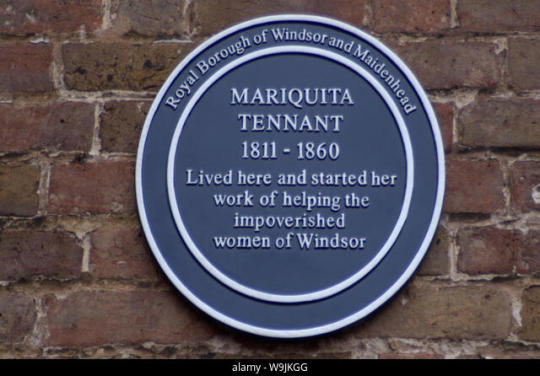

Mariquita Tennant (born Maria Francesca Eroles i Eroles) was a Catalan woman who protected abused and poor women in Windsor (England).
How did she end up in England?
Mariquita was born in the village Pla de Sant Tirs, in the High Pyrenees of Catalonia. During the war between those who wanted an absolutist monarchy and the liberals, Mariquita's father was involved in the liberal side and between 1821 and 1823 he was the leader the local miquelets (militia). When the King of France sent the army known as the Hundred Thousand Sons of Saint Louis to help restore the absolute monarchy, many liberals went on exile to England. Mariquita followed her father, mother and three siblings on exile to London.
They settled in Somers Town, a neighbourhood that had become home to many exiles from Catalonia and the Valencian Country and that had previously also become home to exiled French revolutionaries and American independentists. In February 1833, Mariquita married David Reid, son of a Scottish beer maker who had become wealthy running a pub chain in England. But in November of the same year, David threw himself down a window during an epileptic attack, resulting in his death. Soon after, Mariquita's first and last daughter Mary was born, but she also died soon. Some years later, Mariquita married again. Her new husband was Robert Tennant, but he died a sudden death in 1842.
In 1846, at 38 years old, her first husband's family allowed her to live in one of their properties. She turned this house into a shelter for girls who had been abused by society. There were many girls and women in this situation, so the house was full very soon. Quickly, Mariquita looked for funds and allied with the Anglican church to create a local branch of the House of Mercy. In 50 years, this institution attended and housed 2,500 girls in Windsor, many of which were girls who had been forced into prostitution by poverty and until then had had no way to escape.

The house that Mariquita's first husband's family let her live in, and which she turned into a shelter.
Mariquita suffered bad health for most of her years of service, and in the end died in 1860. She's buried in Saint Andrew's cemetery, overlooking the house she turned into a shelter.
In 2005, the Windsor and Maidenhead city council uncovered a blue plaque to remember her (in England, blue plaques mark the place where a historical event happened or recognise a historical person), though there's a small mistake because it says she was born in 1811 but she was actually born on November 9th 1807.
She's the only Catalan person to have an English blue plaque.
#història#mariquita tennant#windsor#london#england#pla de sant tirs#ribera d'urgellet#catalunya#history#1800s#19th century history#women in history#english history#uk history#women's history#women's rights#europe
61 notes
·
View notes
Text
I can now share the poster on Careers of the Franklin Expedition that I presented at Terror Camp! Here's a blog post about Terror Camp, the project, and some possible next steps.
And here's the poster in all its glory: https://tinyurl.com/fe-careers
This weekend was really such a fantastic experience. I can't put it into words that do it justice.
#terrorcamp2023#terror camp#franklin expedition#naval history#maritime history#19th century history#my writing
55 notes
·
View notes
Note
I’ve heard that nationalism, which is to say the idea of a larger abstract national identity, was t really a thing until 1500s generally. It probably built over time, and it seems that mid to late 1800s w a lot of unification movements, nationalist platforms, reforms, conquests invasions civil wars etc , a few counties in that period were United into a national identity into the country image they’re generally thought of today.
What I’m wondering, if this is something you’re familiar with, is if you have any recommended reading for this period of 1800s?
I am very interested in seeing how those nationalist sentiments were used to build these coalitions into countries in that newly budding global age
Thank you!
I tend to favor a much earlier date or at least I think we need to give more weight to proto-nationalism as a phenomenon, because I think there's a slight teleological mistake that's made in assuming that national identity has to go hand-in-hand with a national state.
Whether it's in the Hundred Years War or wars for independence in Scotland, Wales, Ireland, or what have you, there was a long period prior to the 1500s where quite local identities could co-exist with a strong negative polarization against outgroups. You might think of yourself as a MacDonald first and a Scot second, but no matter how much you hated the Campbells you knew they weren't English, or you could be a Guelph and simultaneously be a local patriot and want to keep the German Emperor out of Italy, or be Machiavelli and be a devoted Florentine republican but also believe in uniting Italy against the Spanish and the French.
In terms of book recommendations:
Imagined Communities is a must-read.
Greenfield and Breuilly are also good.
I think Hobsawm's work on nationalism is classic.
I would also recommend Moggach and Leduc as well as Mark Traugott on the interplay between nationalism and socialism in 1848.
EDIT: Ernest Gellner in Nations and Nationalism is a very important text, but I would recommend reading him together with his major critic Philip Gorski ("The Mosaic Moment: An Early Modernist Critique of Modernist Theories of Nationalism").
#history#book recommendations#nationalism#medieval history#early modern history#european history#19th century history
33 notes
·
View notes
Text
Anyone in here able to recommend a good biography for Germaine de Staël? Especially one that highlights her social and political opinions - she seems to be at the nexus of several interesting circles.
(English, French or German is fine!)
7 notes
·
View notes
Text
Giuseppe Donizetti — served Napoleon on Elba and accompanied him during the Hundred Days

Portrait of Giuseppe Donizetti later in life
Giuseppe Donizetti was born into poverty in 1788, in the Northern Italian city of Bergamo. The eldest of his siblings, he worked from a young age, training as a tailor’s apprentice. His true talent was in music, which was spotted early on in his life.
Giuseppe was conscripted in 1808 at the age of 20. He served the Napoleonic Kingdom of Italy in the Seventh Italian Regiment. He fought against Austria in the War of the 5th Coalition in 1809. He spent the years of 1811, 1812 and 1813 in Spain.
In 1811, he was became ill en route to Spain and was hospitalized at Castelnaudary in France. 43 years later in 1854, he wrote about it to the court of the Ottoman Empire:
“Constantinople, November 22, 1854. Mémoire to His Highness Achmed-Fethy Pasha. Finding myself in a comfortable position thanks to the beneficences of Our August and Glorious Sovereign, I cede to the Hospital of Castelnaudary (Aude), in which I was ill in 1811, the portion coming to me of the legacy left by the Emperor Napoleon I to the Battalion of the Island of Elba. The papers establishing my right to participate in the credit opened up by the Decree of August 5, 1854, issued at Biarritz by His Imperial Majesty the Emperor Napoleon III, I have been obliged to send to France at the time when I was honored with a brevet as Chevalier of the Legion of Honor. Your Highness's Very humble Servant, Joseph Donizetti.”


Location and photograph of Castelnaudary
After the dissolution of the Kingdom of Italy and the First French Empire, he enlisted in the French military and was stationed on the island of Elba as a military flutist. It was on Elba, in the town of Portoferraio, where he was married in 1815.
That same year, he accompanied Napoleon during the Hundred Days, traveling with him on the same ship from Elba to Antibes, France. He likely fought at the battle of Waterloo.
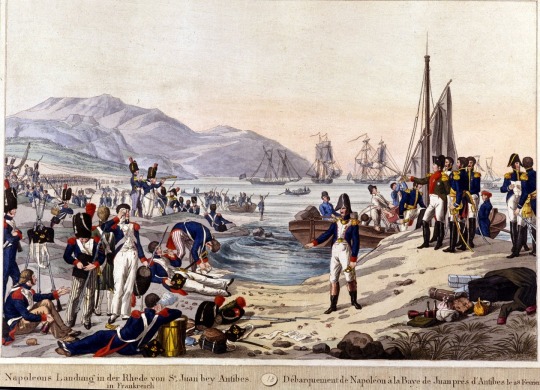
Landing of Napoleon I in Antibes in 1815
After Napoleon:
The Austrians took control of Northern Italy after the fall of Napoleon. According to the historian Emre Aracı, Giuseppe was “a greal admirer of Napoleon and the French […] Giuseppe strongly opposed his country’s domination by the Austrians. Evidence shows that he secretly took part in the Carbonari resistance and even appeared at court trials.”
Giuseppe Donizetti became a composer, and had a full career as Instructor General of the Imperial Ottoman Music. He even composed the first National Anthem of the Ottoman Empire, the Mecidiye Marşı. His main legacy is introducing Western marching music to the military of the Ottoman Empire.
He was employed by the Ottoman government on 17 September 1828 for an annual salary of 8,000 francs. This was considered a very high salary by his family. Giuseppe’s trouble with the Austrian authorities after the fall of Napoleon may have been a motivator for him to leave Italy. He moved to Constantinople at the age of 39 and spent the rest of his life there.
Giuseppe’s patron was Sultan Mahmud II, who ruled from 1808 to 1839, and Sultan Abdulmejid I, who ruled from 1839 to 1861.
According to the historian Emre Aracı:
“The Donizettis were so well-liked in the Ottoman capital that when fire broke out near their house Ahmet Fethi Pasha, the sultan's brother-in-law, ordered all the houses surrounding the maestro's home to be razed to the ground in order to prevent the flames reaching the building.”
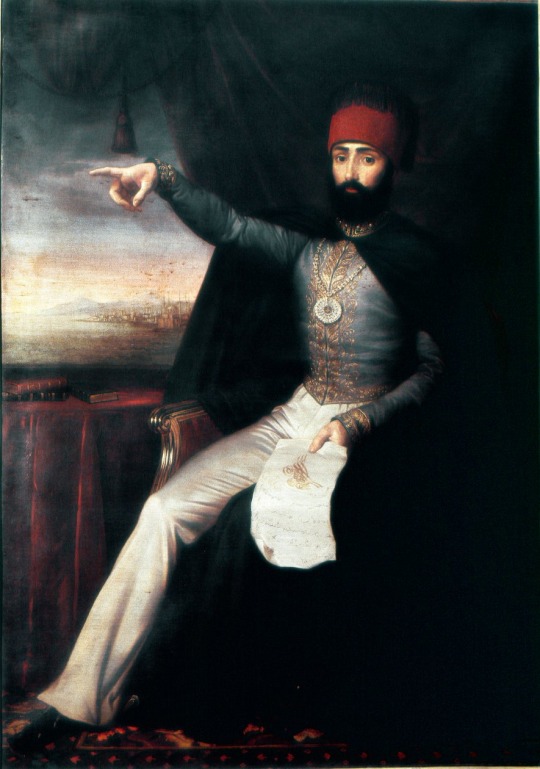
Sultan Mahmud II
His brother, Gaetano, called him his fratello turco— Turkish brother, writing to his friend that “He loves Constantinople, to which he owes everything.”
Giuseppe even encouraged his brother to move to Constantinople, but Gaetano declined. “I do not want to play the fool like my brother, the Bey, who, after having earned more than I perhaps, stays there in ancient Byzantium to scratch his belly between the plague and the stake,” wrote Gaetano.
Giuseppe moved to Constantinople two years after the creation of the Imperial Musical School (Muzıka-i Hümâyûn), which was an Ottoman institution which trained its students in Western style of music. He was specifically recruited as an expert to help lead this effort.

Giuseppe’s younger brother, Gaetano. By Francesco Coghetti, 1837
Gaetano Donizetti, though younger than Giuseppe, became the much more successful and internationally well-known brother, producing nearly 70 operas in his life. Gaetano is considered one of the most successful opera composers in history. Because of this, Giuseppe is widely known as Gaetano Donizetti’s brother. The historian Emre Aracı pointed out that this has actually been good for Giuseppe’s reputation because it has enabled him to be remembered when many other composers have been forgotten.
Both brothers were awarded the Ottoman Order of Nișan-i Iftihar. When Gaetano received the award at the Ottoman Embassy in Paris, he proudly said: “Napoleon belongs to two centuries, I to two religions.”
Burial:
Giuseppe died in 1856, and is buried in the vaults of St. Esprit Cathedral, on the European side of Constantinople, in the district called Pera (now called Beyoğlu). According to Emre Aracı, the district “was once the home of a thriving Christian community”. The Church was built in 1846, 10 years before Giuseppe died.
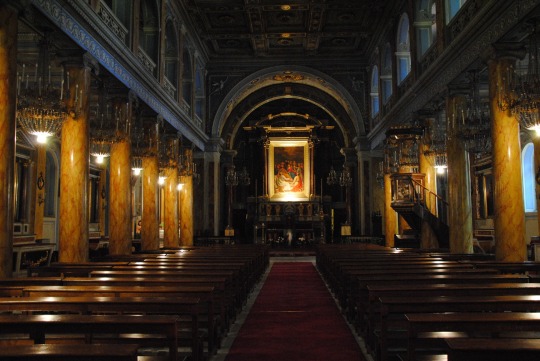
Interior of St. Esprit Cathedral
Giuseppe and his brother Gaetano are two great success stories and examples of people from impoverished backgrounds who go on to live prosperous and interesting lives.
Sources:
Herbert Weinstock, Donizetti and the World of Opera in Italy, Paris and Vienna in the First Half of the Nineteenth Century, 1963
Emre Aracı, Giuseppe Donizetti at the Ottoman Court: A Levantine Life, The Musical Times, Vol. 143, No. 1880 (Autumn, 2002), pp. 49-56
Emre Aracı, Giuseppe Donizetti Pasha and the Polyphonic Court Music of the Ottoman Empire, The Court Historian, Volume 7, 2 December 2002
Özgecan Karadağli, Western Performing Arts in the Late Ottoman Empire: Accommodation and Formation, 2020
#Giuseppe Donizetti#Donizetti#napoleonic era#napoleonic#Ottoman Empire#ottoman#napoleon#napoleon bonaparte#gaetano donizetti#turkey#turkish history#ottoman history#first french empire#French empire#history#19th century#france#french history#the hundred days#Francesco Coghetti#Istanbul#Constantinople#1800s#19th century history#Napoleon’s soldiers#opera#composers#composer
9 notes
·
View notes
Text

“women be shopping” - daniel o’connell, 19th century
#history memes#history shitposting#history student#irish history#memes#irish politics#modern history#19th century history#19th century#humor#humour
4 notes
·
View notes
Text
Does anyone else have record or data about which learned societies Francis Crozier was a part of?
I only have RAS and FRS in there. But I feel there was also RGS but I am struggling to confirm. If anyone has any other data, could you send it my way?
#learned society#FRS#Fellowship of the Royal Society#RGS#Royal Geographical Society#RAS#Royal Astronomical Society#19th century history#francis crozier#james clark ross#william perry#polar exploration#the franklin expedition#franklin expedition#casting a large net right now#naval history
6 notes
·
View notes
Text
Emergence of the Professional Revolutionary

Pyotr Tkachev, 19th century revolutionary theorist - read closely by Lenin.
'Nineteenth-century Europe witnessed the emergence of professional revolutionaries, intellectuals who devoted themselves full-time to studying the history of past upheavals in quest of tactical guidelines, analyzing their own time for signs of coming upheavals, and, once they occurred, stepping in to direct spontaneous rebellion into conscious revolution.
Such radical intellectuals saw the future as marked by violent disturbances, and progress as requiring the destruction of the traditional system of human relations. Their objective was to set free the "true" human nature suppressed by private property and the institutions to which it gave rise.
Radical communists and anarchists imagined the coming revolution as thoroughly transforming not only every political and socio-economic order previously known, but human existence itself. Its aim, in the words of Leon Trotsky, was "overturning the world."'
Pipes, Richard. “Introduction.” A Concise History of the Russian Revolution, Alfred A. Knopf, New York, 1995, p. xiv.
#Pyotr Tkachev#Leon Trotsky#Richard Pipes#Russian Revolution#Professional Revolutionaries#Communism#Anarchism#Anarchists#History#European History#19th Century Europe#19th Century History
3 notes
·
View notes
Text
Bun gata mi-am revenit hiiii
Omg napoleon si tarul alexandru ca dame nu pot sa cred theo ce nespalat esti😰😰😰😰😰
Also my bad for the horrific quality did them on my chromebook and when i sent them on my exquisite android the quality dropped fast as hell im gonna kms





#napoleon#napoleon bonaparte#napoléon#tsar alexander i#alexander i of russia#alexander i#napoleonic era#napoleonic#history inspired#history#histoire#xix century#xix century history#19th century#19th century history#historical figures#new art dropped#sketches#art#small artist#digital artist#digital doodle#doodles#doodle dump#coloured sketch#genderbend#queer history#xix
58 notes
·
View notes
Photo

This is Concepció Aleixandre (1862-1952). She was a Valencian doctor, inventor and teacher who was one of the first female gynaecologists and who pioneered working in favour of women’s health in the late 19th and early 20th century, particularly working in favour of better health for poor women.
In 1875, the Spanish professional medical magazine El Siglo Médico said that “because of physiological laws, the woman-doctor is a dubious being, a hermaphrodite or a sex-less being or, in any case, a monster”. Only 14 years after this, there were already 5 women who graduated in Medicine: 3 from the University of Barcelona and 2 from the University of València. One of them was Concepció Aleixandre.
She was born in a wealthy family from València who let her study. She graduated high school with the highest grade in all subjects and then studied to become a teacher (which was considered a women’s job), again with the highest grade in all subjects, but immediately after graduating she tried to enrol to become one of the first women to study medicine in the University of València. After many issues with the university’s management, which wasn’t used to allowing women to study, she was allowed and was one of the brightest in her class. She got her license in Medicine and Surgery in 1899 - once again, with the highest grade in most subjects - and decided to specialize in Gynaecology. Ironically, at first Spain’s Gynaecological Society did not allow her because they did not allow women, but eventually they changed their mind and she became the first woman member of Spain’s Gynaecological Society.
She moved to Madrid to work in a hospital, but at the same time opened a private clinic where she attended patients for free or adapting the price to their economic situation. Her attention became famous because of her warmth and closeness with the patients and their children, who could go to the office to hundreds in a single day.
She also worked to promote hygiene, took part in scientific and medical research, and worked for women’s rights. She was vice-president of the feminist organization National Council of Women, she was president of the Women’s Committee for the People’s Hygiene, of the Ladies’ Section of the Ibero-American Union, and in 1928 she was declared honorary president of the Association of Spanish Women Doctors. In 1926, still in Madrid, she founded the Lyceum Club Femenino, which was the first feminist club in Spain. She also spoke in favour of women’s right to vote and gave conferences and wrote articles to promote hygienic knowledge for the health of women and children. To continue this work, between 1916 and 1920 she ran a section about women’s health in the magazine La Medicina Social Española.
Concepció Aleixandre also campaigned for women to have access to education and culture. For this reason, she founded the People’s Ibero-American Centre to promote the education of women in the Iberian peninsula and Latin America, and campaigned in favour of the Galician writer (in Spanish language) Emilia Pardo Bazán being admitted in the Royal Spanish Academy of language in 1912, but she was again denied access as she had already been denied in 1889 and 1892. The first woman to become a member of the Royal Spanish Academy would only arrive in 1979 (Carmen Conde).
Sources: Diari La Veu, Sàpiens.
#concepció aleixandre#història#país valencià#history#gynaecology#medicine#1800s#19th century#1900s#early 20th century#women's history#women in history#late modern history#historical#19th century history#20th century history#feminism#rae#emilia pardo bazán#health education
195 notes
·
View notes
Text
Royal Navy Records
Thought I'd try here: I am researching the careers of the Franklin Expedition. I am looking for service records of the crew and muster lists for related ships. I have started with what's scanned online from the Kew National Archives, but if this work has already been done I'd love to find it.
I started transcribing what's online of ADM 196 (Royal Navy officers), but the scans and/or records themselves seem to incomplete. (Non-officers are of course much harder to find as well.) If anyone is aware of existing transcriptions or other resources I'd be very grateful!
I'd also like to contribute to a wider effort like Global Maritime History or Naval-History.net for ~1815-45 if one exists!
Edited to add a link to a post that goes into a little more detail about the purpose of the project, and where I'll be collecting resources as I find them: Franklin Expedition Careers Project
#maritime history#franklin expedition#polar exploration#19th century#19th century history#19th century research#yes this is for terror camp!#my stuff
16 notes
·
View notes
Note
You pdhing in history? Could you tell me something weird about your field of expertise? I'm stressed because three days to finish two papers. Thanks!
AAH, this is so much fun.
Okay, one of my favourite anecdotes about late-19th century Scandinavian literature
August Strindberg writing to Verner von Heidenstam and asking whether he would like to order condoms from the pharmacy together, to save on shipping costs

Now get off tumblr and write! I find it helps to write by hand on paper, then I can’t erase everything or start to edit midway through a paragraph
#my asks#august strindberg#19th century history#19th century literature#victorian studies#fin de siècle#fin de siecle
18 notes
·
View notes
Text

Christmas Morning by Paul Seignac
Doing some Christmas shopping? Consider these Christmas gift ideas from the 19th century.
#christmas gift ideas#christmas shopping#christmas gift#19th century#1800s#19th century history#christmas
3 notes
·
View notes
Text
Welp, here I am
First post....and I don't know what to say. I'm probably much too old for this site (almost 43) but does it help that I'm incredibly immature? I've been told, not diagnosed, that I'm autistic and have ADHD. I don't know if it's accurate or not. I do know I have major depression and anxiety....
Let's see, I love cats, History, Star Trek & Wars, orchestral movie scores, all that. I'm very anti-Trump and his entire ilk. I have no living family and at the moment have been job hunting for 6 months with no luck.
I had another account but it's got so much dust on it and I never got much interaction there. I'm hoping for more here.
Other than that, I guess if you have questions, go for it. I don't have much to hide. And if you are a porn account, ICK ICK ICK go away. Sex adverse asexual here and ICK.

#first post#ask me anything#bored af#new friends#star trek#star wars#cats#anti trump#asexual#mental health#history#civil war history#19th century history
2 notes
·
View notes